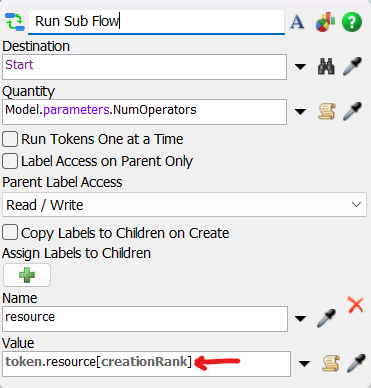Hello,
I need to a acquire multiple operators and assign the same tasksequence to all of them. It seems like a token is able to acquire the resources needed and assign them to a label called "resource". "resource" is an array of all the operators acquired. However, when I use the "resource" label for subsequent tasks, only the first operator in the array gets assigned things to do while the rest are marked as idle.
Is there a way I can reference the whole array of operators in subsequent tasks?
This is a model that was posted by @Jeanette F that I'm trying to build on and learn how to create my own custom basic FR.

